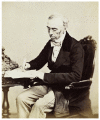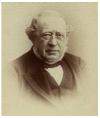A History of the Pharmacological Treatment of Bipolar Disorder
- PMID: 30041458
- PMCID: PMC6073684
- DOI: 10.3390/ijms19072143
A History of the Pharmacological Treatment of Bipolar Disorder
Abstract
In this paper, the authors review the history of the pharmacological treatment of bipolar disorder, from the first nonspecific sedative agents introduced in the 19th and early 20th century, such as solanaceae alkaloids, bromides and barbiturates, to John Cade's experiments with lithium and the beginning of the so-called "Psychopharmacological Revolution" in the 1950s. We also describe the clinical studies and development processes, enabling the therapeutic introduction of pharmacological agents currently available for the treatment of bipolar disorder in its different phases and manifestations. Those drugs include lithium salts, valproic acid, carbamazepine, new antiepileptic drugs, basically lamotrigine and atypical antipsychotic agents (olanzapine, risperidone, quetiapine, ziprasidone, aripiprazole, asenapine, cariprazine and lurasidone). Finally, the socio-sanitary implications derived from the clinical introduction of these drugs are also discussed.
Keywords: antiepileptic drugs; antipsychotic drugs; bipolar disorder; lithium; mood stabilizer drugs; pharmacological treatment.
Conflict of interest statement
The authors declare no conflict of interest.
Figures















References
-
- Liddell H.G., Scott R. A Greek-English Lexicon. Clarendon Press; Oxford, UK: 1940.
-
- Pinel P. Nosographie Philosphique ou La Methode De L’analyse Appliquee a La Medecine. 6th ed. Brosson; Paris, France: 1818.
-
- Huertas R. El saber psiquiátrico en la segunda mitad del siglo XIX: La somatización de la enfermedad mental. Historia 16. 1993;18:66–73.
-
- Kraepelin E. Psychiatrie. Ein Lehrbuch Für Studirende Und Aerzte. Sechste, Vollständig Umgearbeitete Auflage. Volume 2 Barth; Leipzig, Germany: 1899.
Publication types
MeSH terms
Substances
LinkOut - more resources
Full Text Sources
Other Literature Sources
Medical

